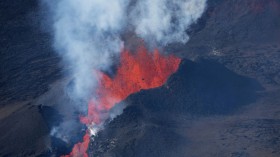A recent analysis conducted by scientists has found that the sun is the most perfectly round shaped object in nature but is comparatively slimmer than expected.
The sun's perfectly round shape has left scientists baffled. According to previous beliefs, as the sun doesn't have a solid shape and rotates every 28 days, scientists thought the sun would change its shape owing to the flow of matter in the sun's interior and atmosphere. However, a recent measurement of the sun has shown that the sun is the roundest sphere in nature.
"So far, just about anything we measure with sufficient accuracy about the sun ends up varying with the 11-year sunspot rhythm," study lead author Jeffrey Kuhn, a physicist and solar researcher at the University of Hawaii in Pukalani, told SPACE.com.
Measuring the sun's shape has been quite challenging, even 50 years after the first attempt. "There are literally tens of measurements, and most of them don't agree," Kuhn said. "Most of the differences are attributable to how hard it is to see small shape changes through the atmosphere." However, the NASA's Solar Dynamics Observatory has made things simpler for researchers who have been measuring the sun's shape for two years now from 2010 to 2012.
"Now that we have the necessary accuracy to measure the shape, it turns out it doesn't vary," Kuhn said. "For years we've believed our fluctuating measurements were telling us that the sun varies, but these new results say something different. While just about everything else in the sun changes along with its 11-year sunspot cycle, the shape doesn't."
Along with finding of the roundness of the sun, researchers have also found that the sun is flatter than previously believed.
"The peculiar fact that the sun is slightly too round to agree with our understanding of its rotation is also an important clue in a longstanding mystery," Kuhn said. "The fact that it is too round means that there are other forces at work making this round shape. We've probably misunderstood how the gas turbulence in the sun works, or how the sun organizes the magnetism that we can only see at the surface. Finding problems in our theories is always more exciting than not, since this is the only way we learn more."
© 2024 NatureWorldNews.com All rights reserved. Do not reproduce without permission.





